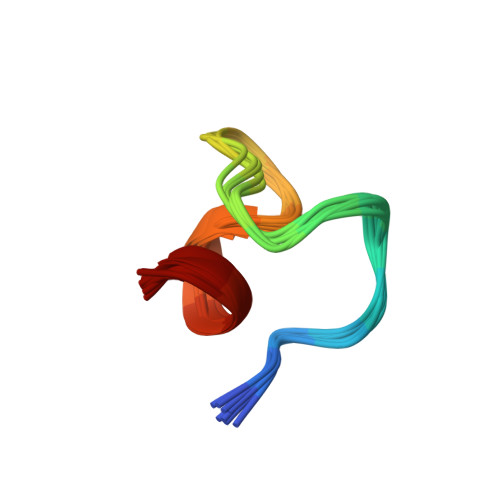The spliceosomal phosphopeptide P140 controls the lupus disease by interacting with the HSC70 protein and via a mechanism mediated by gammadelta T cells.
Page, N., Schall, N., Strub, J.M., Quinternet, M., Chaloin, O., Decossas, M., Cung, M.T., Van Dorsselaer, A., Briand, J.P., Muller, S.(2009) PLoS One 4: e5273-e5273
- PubMed: 19390596
- DOI: https://doi.org/10.1371/journal.pone.0005273
- Primary Citation of Related Structures:
2L5I, 2L5J - PubMed Abstract:
The phosphopeptide P140 issued from the spliceosomal U1-70K snRNP protein is recognized by lupus CD4(+) T cells, transiently abolishes T cell reactivity to other spliceosomal peptides in P140-treated MRL/lpr mice, and ameliorates their clinical features. P140 modulates lupus patients' T cell response ex vivo and is currently included in phase IIb clinical trials. Its underlying mechanism of action remains elusive. Here we show that P140 peptide binds a unique cell-surface receptor, the constitutively-expressed chaperone HSC70 protein, known as a presenting-protein. P140 induces apoptosis of activated MRL/lpr CD4(+) T cells. In P140-treated mice, it increases peripheral blood lymphocyte apoptosis and decreases B cell, activated T cell, and CD4(-)CD8(-)B220(+) T cell counts via a specific mechanism strictly depending on gammadelta T cells. Expression of inflammation-linked genes is rapidly regulated in CD4(+) T cells. This work led us to identify a powerful pathway taken by a newly-designed therapeutic peptide to immunomodulate lupus autoimmunity.
Organizational Affiliation:
CNRS UPR9021, Institut de biologie moléculaire et cellulaire, Strasbourg, France.
















